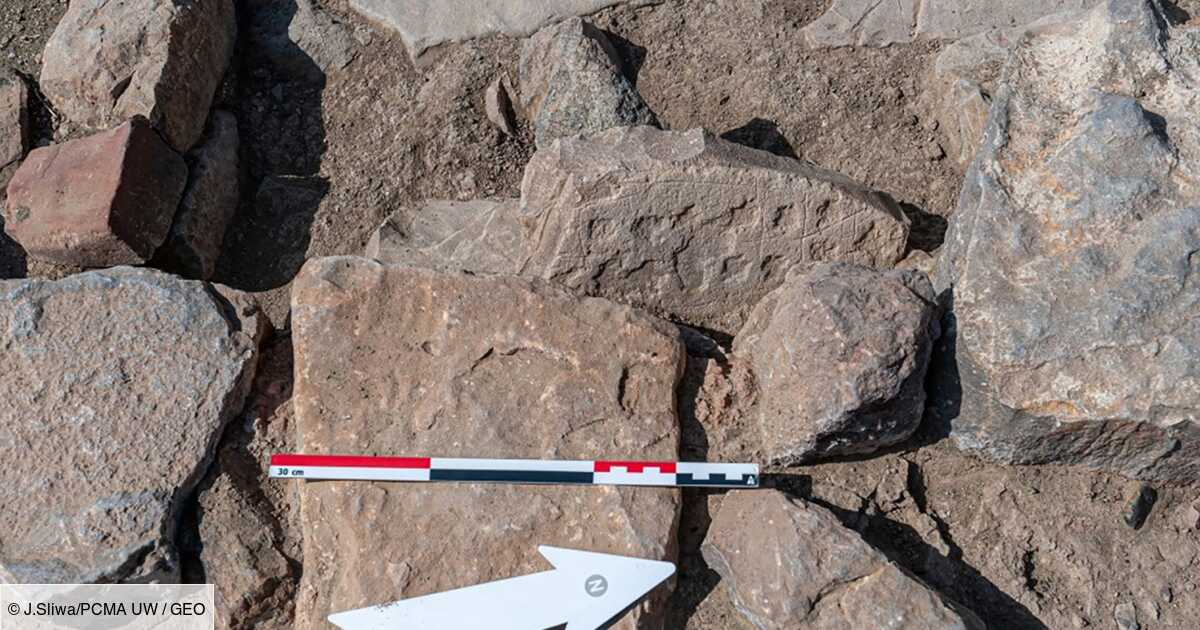At first glance, it could be a simple stone as there are plenty in the mountain valleys of Oman. If its surface is not etched with marks and holes, then its location owes nothing to chance. This stone is actually a board game that dates back about 4,000 years, according to a recent announcement by archaeologists.
This artifact appeared during excavations near the village of Ain Bani Saida in Wadi Qumaira, north of Oman. Thanks to the research, the specialists were able to determine that the area has been occupied since the Neolithic period and presented the remains of many sites dating back to different periods including the Bronze Age and the Iron Age.
“Ain Bani Saida is strategically located at the intersection of roads connecting Bat to the south, Al Buraimi and Al Ain to the north and the ocean coast near Sohar to the east.‘, explained In a press release Professor Piotr Bieliński of the Polish Center for Mediterranean Archeology at the University of Warsaw (PCMA UW) who is involved in the project.
Four rounds and a rare board game
During the last excavations, the team focused in particular on the Bronze Age site that was unearthed.ExceptionalThere they discovered the remains of at least four towers – three circular and one angular – not one of which was visible on the surface despite being over twenty meters in diameter.
“The function of these notable structures found at several sites attributed to the so-called Umm al-Nar culture remains to be elucidated.Dr. Agnieszka Pieńkowska, also from PCMA UW, said other discoveries were more enlightening, including the discovery of the famous board game of stone found in one of the rooms.
According to archaeologists, previous research has already identified examples of similar games in cultural and economic centers dating back to the Bronze Age. “Such finds are rare but examples are known in an area stretching from India to Mesopotamia across the eastern Mediterranean.This was confirmed by Professor Belinsky.
“The most famous example of a game board based on a similar principle is the one in the tombs [royales] Role‘, an Iraqi archaeological site dating back to about 2600 BC, and continued that the game in question, one of the oldest known to date, consists of a board, four dice and two sets of pawns.
“An important place in prehistoric times in Oman”
In addition to the towers and the game, archaeologists have discovered some copper pieces as well as traces indicating work of the same material. “This indicates that our village participated in the lucrative copper trade for which Oman was famous at that time, with reference to Omani copper in cuneiform texts from Mesopotamia.Professor Belinsky said.
These new findings help shed light on the way people lived thousands of years ago in this little-studied area of Oman. “The abundance of site relics indicates that this valley was an important prehistoric place in Oman‘ added the specialist.
The team, led by Professor Belinsky and Dr Sultan Al Bakri, of Oman’s Ministry of Heritage and Tourism, plans to continue excavations this year elsewhere in the valley where the remains of a mother fire culture emerged.
➤ Oman, the preserved jewel of the East, GEO, €6.50, on newsstands from December 29, 2021 (No. 515).
➤ To view all issues of Geo Available individually, it’s here! Are you already loyal to GEO content? So you don’t miss a thing, find out Our subscription plans To receive GEO easily at your home every month.

Read also:

The preserved jewel of the East, Sultanate of Oman, in the summary of the new issue of Geo

Amman: a village that transforms abandoned traditional houses into tourist hotels

Missing piece of the famous chess set resurfaces after 200 years in the UK

“Tv geek. Certified beer fanatic. Extreme zombie fan. Web aficionado. Food nerd. Coffee junkie.”





